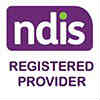
Programming your power wheelchair for optimal driving can make all the difference in improving independence and safety. From speed and manoeuvrability, power wheelchairs can be programmed to suit a user’s unique needs. For example, a power wheelchair that is too sensitive can offset a reflex in a child with cerebral palsy. A power wheelchair that stops suddenly may not be ideal for a C3 quad with minimal trunk balance.
Each manufacturer has its own electronics system. However, most of them have similar parameters that are programmable. Some of these driving parameters include:
Forward Speed: The maximum speed achieved when the joystick reaches full throw (furthest from centre). It is often represented as a percentage of full available speed on a specific power wheelchair.
Turning Speed: This is full speed achieved during a turn. This is usually set much lower than Forward Speed. If turning speed is too high, the wheelchair may be over responsive and jerky. If the turning speed is too low, the wheelchair will be sluggish. A user with less controlled movements would generally have their turning speed set low.
Reverse Speed: The maximum speed achieved going backwards. It is usually lower than forward, as users generally have less control driving backwards and may reverse farther than necessary if the speed is too high.
Acceleration: How quickly the chair reaches full speed, whether moving forward or reverse or turning. If set too high, the power wheelchair may lurch suddenly. If set too low, the wheelchair may not be responsive enough. Setting this parameter correctly will allow the user to accommodate to the motion, whatever the direction.
Deceleration: How quickly the chair stops in the parameters listed above. If set too high, the wheelchair may come to an abrupt stop. If set too low, the wheelchair may roll too far forward.
Torque: The power output needed to drive over various surfaces without increasing speed. Setting the torque correctly will allow for controlled driving especially when driving over thresholds, grass or ramps.
In addition to the above parameters, most expandable electronic systems will allow for additional adjustment including: tremor dampening (how quickly the wheelchair responds to movement of the joystick), joystick throw (how much movement can be applied to the joystick before the wheelchair reaches maximum speed) and directional selection (selecting which joystick movement will move the wheelchair in the selected direction – eg: pulling back on the joystick to go forward.
Programming the wheelchair can make all the difference in the user being able to successfully and confidently control the power wheelchair. There are times where the wheelchair may not need replacing but reprogramming - we often have people tell us they want a new power wheelchair as their current one is too hard to control but it simply needs reprogramming to better suit the person. Our team at GTK are proficient in programming the wheelchairs to perform smoothly, however we are reliant on the user’s feedback and the therapist’s clinical and observational skills to match the electronics to the client’s needs.
Our GTK Assistive Technology Consultants are experts in identifying the best power wheelchair electronics options for a person and then programming it to suit them. If you’re having trouble with a power wheelchair that ‘just doesn’t drive right’, get in touch with us to see if we can help.



